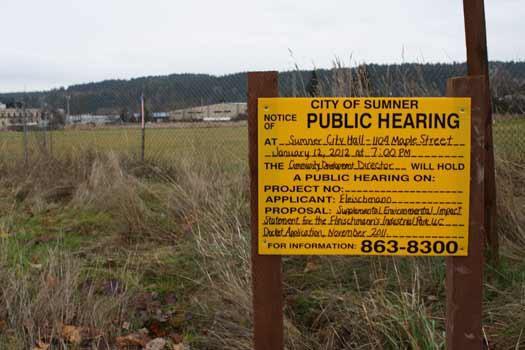The City of Sumner issued Northstar Chemical Inc. a list of 43 necessary steps to make the construction of a chemical storage facility amenable to the local government.
The steps—which will be required to be completed before the city issues building permits—were derived from the Final Environmental Impact Statement issued in April. Chapter three of the statement assessed site risks and potential worst case scenarios originating at a chemical storage facility. One such scenario—deemed improbable in the report—described a tank containing 8,000 gallons of nitric acid rupturing, and its contents evaporating into the air.
“The probability of such an accident occurring is extremely low (2 percent, or once every 50 years), based on Federal Motor Carrier Safety Administration statistics for hazardous substance transport, and may not occur within the life of the facility,” the report read. “Never the less (sic), this incident was evaluated.”
The toxic radius of such a spill would be 0.2 miles, or approximately 1,000 feet from the origin of the rupture.
Thus the steps include the submission of a spill containment plan and regular monitoring of the chemical quality of the soil.
From the project’s beginning, many people have written to the city to voice their concerns about potential risks to the immediate environment.
The Muckleshoot Indian Tribe was solicited for input in 2010, and Watersheds and Land Use Leader Karen Walter wrote back with concern about risks to endangered White River salmon and a stance of opposition to the project.
“We do not want a chemical plant in Sumner,” wrote Karen and Ray Berto, a local couple. “Especially if it can get into Sumner water source (sic). It would be a big environmental impact for this area.”
Sara Hoime, a Sumner resident and active opponent of the Northstar project, followed up the release of the city’s 43 action items with a letter to other chemical storage opponents and media outlets, decrying the possibility of project approval even with the conditions in place.
“Is this the closure we wanted?” she wrote. “It is a gigantic disappointment.”
Hoime urged project opponents to continue voicing their concern in public, at council meetings or otherwise, and to brainstorm ways to fund an environmental attorney for pursuing a formal appeal.



